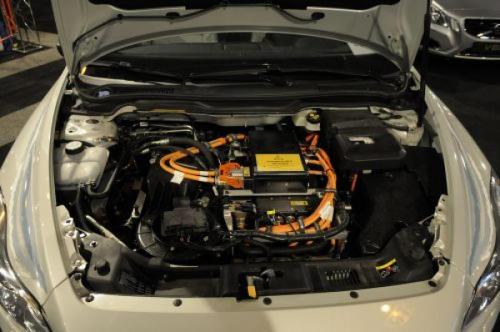Electric & Hybrid Vehicles - Part 1
The global recession which took effect in the last 5 years has seen commercial pressure on the motor industry to seek alternatives to fuel inefficient vehicles. By the end of 2011 worldwide sales of hybrid vehicles had reached 4.5 million units. Wholly electric vehicles, commercially available since 2008, have had a slower start in terms of initial sales. This is principally due to the higher cost (in comparison to internal combustion engine vehicles) and concerns over battery life (range) and charging infrastructure. This is despite government tax incentives in most territories.
So the last decade has witnessed a growth in this sector of the motor industry with literally dozens of models available in hybrid form and a growing number of wholly electric vehicles.
What has also increased is the level of concern over these vehicles when they are involved in a road traffic collision, submerged in water, or involved in fire. The principal hazard, in the eyes of rescuers is of course the high voltages involved in the vehicles. The 2012 model Toyota Prius hybrid for example has a high voltage lithium-ion battery assembly rated at 207.2 volts, with an inverter/converter which boosts this to 650 volts to supply the electric motor. The Nissan Leaf electric vehicle has a lithium-ion battery containing 48 separate modules delivering a maximum output of 403.2 volts.
Lifting the bonnet (hood) on an electric/hybrid vehicle reveals high voltage wiring (orange).
We can already begin to see that the technology used across all the manufacturers is non-standard. The location and position of components vary greatly (even different models from the same manufacturers are differently configured)
So just how are we expected to prepare for extrication from the growing number of electric and hybrid vehicles? Well for a start, it simply is not practical to retain all of the information regarding the currently available models, so can we adopt a standard approach?
In my view, yes we can. A simple look at any of the available online “Emergency Response Guides” (ERG’s) will allow us to identify a definite pattern of approach which will allow us to work safely and affect a rescue within the desired time.
This emergency response guide can be downloaded from: https://www.nissan.co.uk/vehicles/brochures.html
Identification
All vehicles must be treated as hybrid or electric until proved otherwise, and this information must be gathered as part of your initial 360 degree survey of the scene. In terms of preparation, knowledge of the current market is an advantage. It is even easy to search online for the most common types in your country (by sales). Having this information allows us to identify the most likely makes and models we may encounter.
The days are gone where hybrid cars were specifically designed and easily recognisable (Prius, Insight etc.) as many models are now available, not only as electric/hybrid but also as internal combustion engine, liquefied petroleum gas and even hydrogen fuel cell (in some countries).
The vehicle badging should identify the vehicle as electric/hybrid, however due to damage or reduced visibility you may have to look a little harder. If the dash panel is still illuminated this can give an indication of the drive train involved. Battery level indicators are usually clearly visible.
Another indicator may be (on electric vehicles) that there is no exhaust. However, this is only a guide.
Of course the major identifying feature will be the presence of the HV orange cables (see image below). These should never be cut (even if HV is shut off) and in my experience the location of such cables do not cause a problem to our well established techniques.
Preventing Movement
We have always been taught to approach a vehicle from the front (actually we should be approaching from the direction our casualty is facing, to prevent further spinal injury) but in the case of an EV/hybrid we must carefully consider our approach. This type of vehicle may have the potential to move without warning as there is (of course) no engine noise we associate with an internal combustion engine (ICE) vehicle. We must prevent movement by chocking the wheels and once considered safe attempt to isolate the ignition system. Most vehicles will show a ‘Ready’ display if the ignition is live. This can be turned off by pressing the ignition button. If this display is clearly off, then do not attempt to engage the ignition.
Next we must locate the vehicle key, usually (on new vehicles) a ‘smart’ key. On modern cars these are ‘proximity keys’ meaning they only have to be within range to allow the driver to start the vehicle. This is where the hunt begins. Remember identifying and removing the key (more than 5 meters away) will ensure that the ignition cannot be restarted. Any search of your casualty to locate this key must be sympathetic to their condition.
We should endeavour to engage the parking brake and put the car into “P” or park mode.
Isolating the High Voltage System/Dealing with SRS & Airbags
There are a number of steps that should be taken in order to satisfy ourselves that the high voltage system is isolated. In the first instance the deployment of airbags will have turned off the HV system (in most new cars an impact speed lower than that required to activate airbags will also isolate the HV system).
Even if airbags have activated we need to follow the following steps:
- Turn off ignition
- Remove smart key to a distance of more than 5 metres
- Access the 12v battery and disconnect (negative terminal first). This will power down the SRS/airbag systems (note: different manufacturers/models quote different times for the dissipation of residual power from the capacitors, e.g. Nissan Leaf – 3 minutes) On some hybrid models, the disconnection of the 12v system will also isolate the HV system
- Access the vehicle fuse box. Manufactures recommend the removal of certain fuses in order to isolate the HV system. My advice is to remove all of the fuses.
- Locate and remove the ‘Service Plug.’ This component acts like a master switch and is designed for a service engineer to remove before commencing work.
This blog post will be followed by 'Electric & Hybrid Vehicles - Part 2' soon!
As ever, I welcome your comments.
Ian Dunbar

